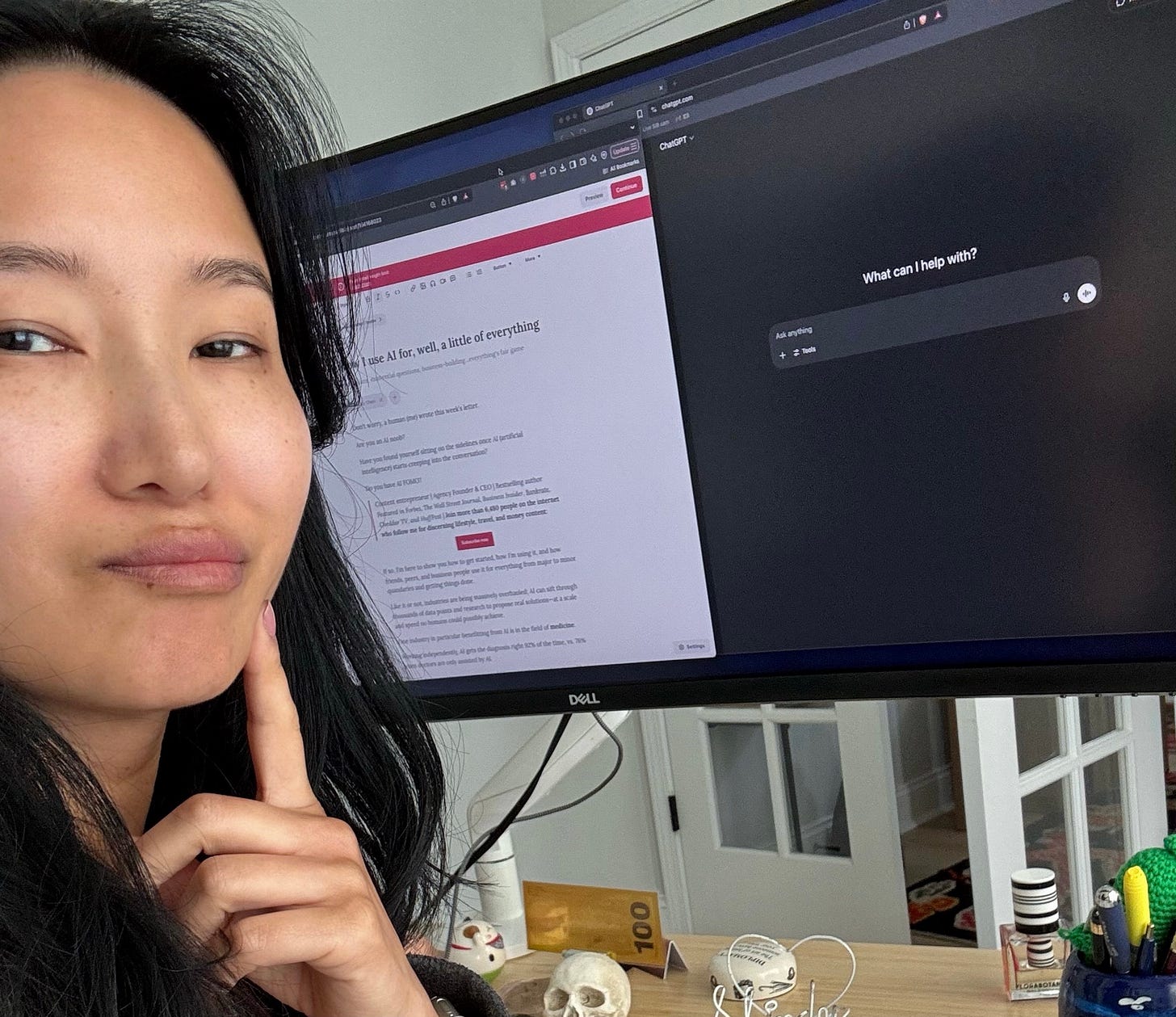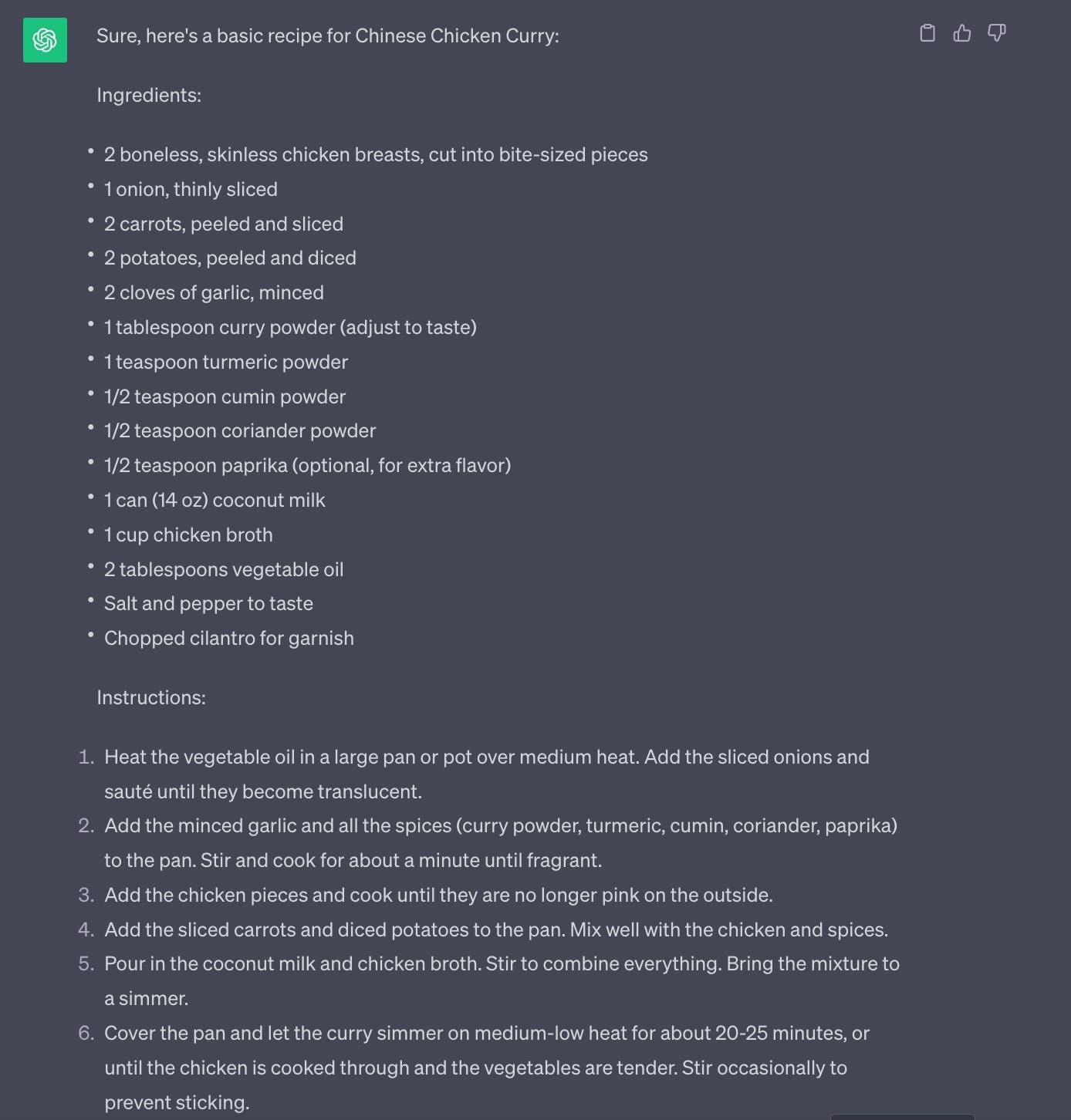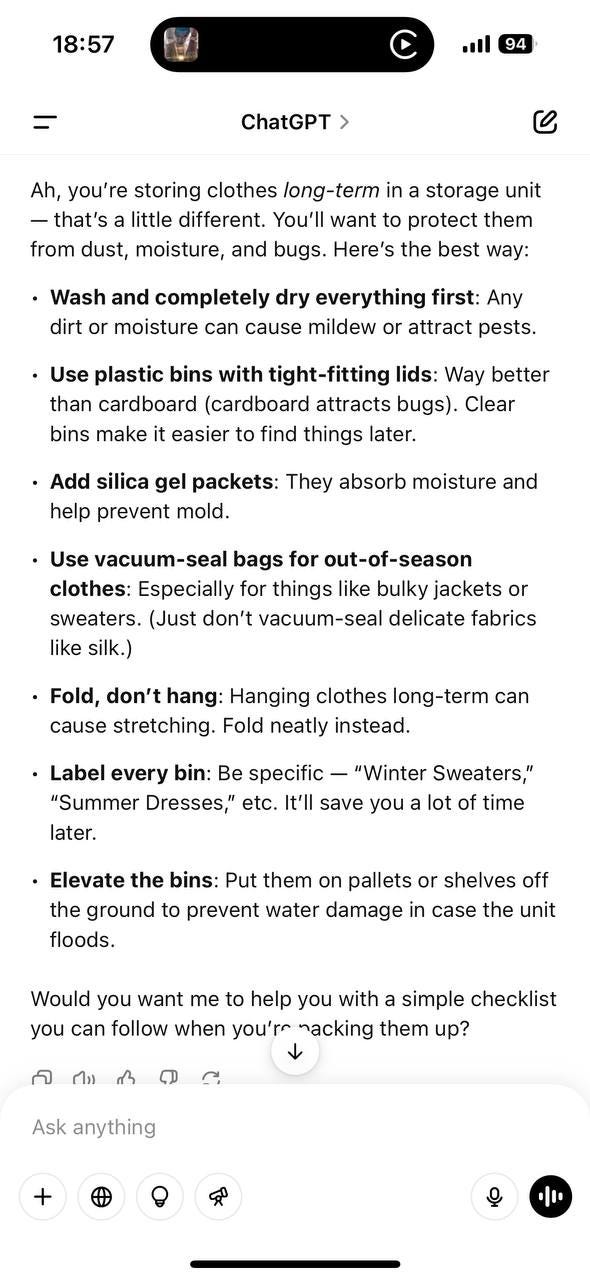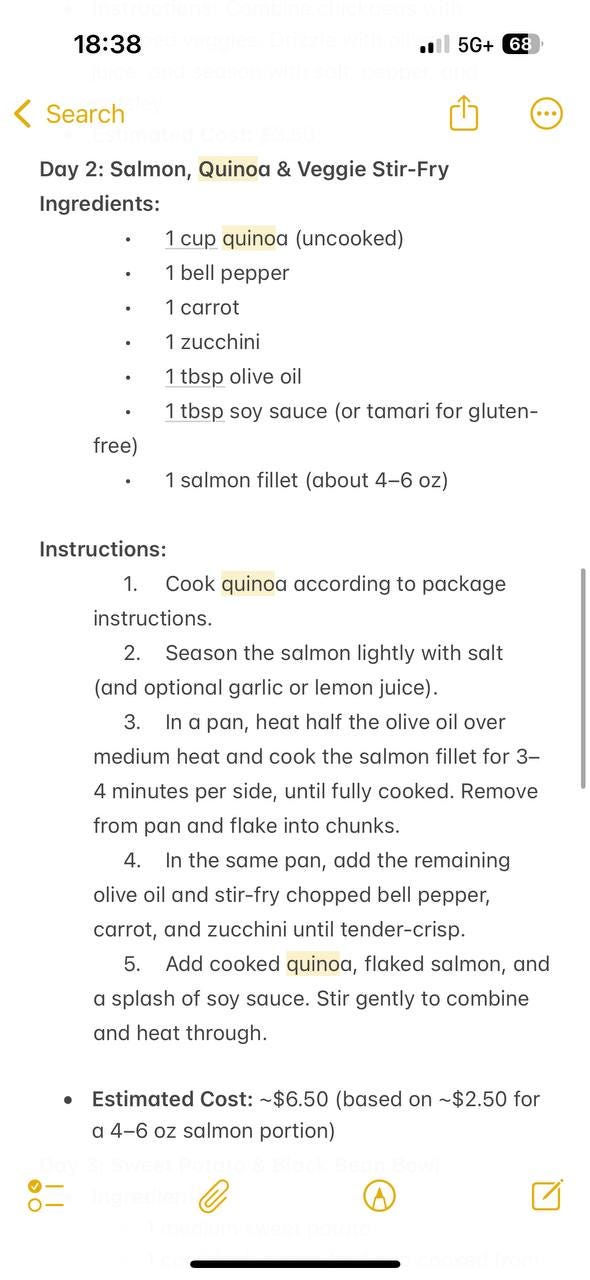How I use AI for, well a little of everything
Meal plans, existential questions, business-building...it's all fair game
Don’t worry, a human (me) wrote this week’s letter.
Are you an AI noob?
Have you found yourself sitting on the sidelines once AI (artificial intelligence) creeps into the conversation?
Content entrepreneur | Agency Founder & CEO | Bestselling author Featured in Forbes, The Wall Street Journal, Business Insider, Bankrate, Cheddar TV, and HuffPost | Join more than 6,480 people on the internet who follow me for discerning lifestyle, travel, and money content:
Do you have AI FOMO?
If so, I’m here to show you how to get started, how I’m using it, and how friends, peers, and business people use it for everything from major to minor quandaries and getting things done.
Like it or not, industries are being massively overhauled; AI can sift through thousands of data points and research to propose real solutions—at a scale and speed no humans could possibly achieve.
One industry in particular benefitting from AI is in the field of medicine.
Working independently, AI gets the diagnosis right 92% of the time, vs. 76% when doctors are only assisted by AI.
It can also suggest new or repurposed life-saving drug combinations, like in the case of this man who was saved by an AI-devised treatment, after his doctors plugged in his symptoms and previous medicines.
Liking this? Learning from this? You can buy me a coffee to show your support:
It’s highly unlikely AI will replace human doctors entirely, but what it can do is greatly improve resources, for example, read routine X-rays meanwhile freeing up time for radiologists to study special or complex cases.
AI has been here all along
Though you may not know it, you’ve already benefited from AI in some shape or form.
For everything from streaming TV to credit card recommendations, the apps and tools we use on a daily basis study our user behaviors and data to better preempt and cater to our needs.
So while AI has been using us for some time now, we can learn how to use it to our benefit, for both life’s most simple and perplexing questions.
How to get started with ChatGPT
The easiest way to participate is by using ChatGPT (Chat Generative Pre-trained Transformer).
The standard version is free to use.
Simply go to chat.openai.com, sign up, and start.
Here’s how I’ve been using ChatGPT
Recipes
While on holiday in Charleston, SC, and dining at The Ordinary, my foodie sister-in-law asked whether ChatGPT could provide a recipe, and not any recipe, but a Chinese chicken curry recipe.
So, I pulled it up and prompted, “What is the best Chinese curry recipe?”
Here’s what we got. She was impressed!
Book summaries
Though I have a fond recollection of Cliff’s Notes, ChatGPT provides decent book summaries.
Case in point, when I asked about Marcel Proust’s Swann’s Way:
Of course, this doesn’t prevent me from reading a book in full, but it does help when I need to recall a book’s basic premise.
Personal and existential life questions
Though ChatGPT prefaces answers to personal questions with big disclosures (“everyone is unique” blahdy blah) it does provide fairly practical yet surprisingly compassionate advice.
For example, on an IVF query, all of the considerations listed aren’t too different than advice you’d get from an initial doctor consult or friends who’ve been there, done that:
I’ve also used ChatGPT for complex math equations on net worth, investment time horizon calculations, figuring out if I have narcissistic personality traits (I do, but who doesn’t 🤯), getting over someone who is ignoring you 😢, and ideal ways to store clothes:
How friends and colleagues use ChatGPT
In just the past month, I’ve heard of two instances where people plugged in weight loss and dietary goals, and ChatGPT was able to create an entire meal and exercise program, complete with grocery lists, budgets, and recipes.
And, in the business world, ChatGPT is doing all of this:
Answering emails
Creating marketing content, images, social media calendars, and web landing pages
Writing job descriptions, sorting through resumes, and then narrowing down best candidates
Scanning, reading through, and suggesting legalese or changes on legal contracts
Researching job titles and salaries by location so people know what to ask for when applying for jobs or negotiating promotions and raises
A couple of caveats…
ChatGPT isn’t always right
In fact, it can provide totally fake or erroneous info which this sanctioned attorney found out the hard way, after submitting ChatGPT-created casework filled with fake legal briefs, judicial opinions, and citations.
And don’t forget the nefarious ways people have used AI, for example with deepfakes that make us question reality.
If you ask ChatGPT to write an entire blog post for you, then it’s going to be generic, without any real point of view.
Signs that it’s AI also include using many bulletpoints and only one grammar tense; a robot’s voice is unlikely to establish you as an authority or thought leader.
On the flip side, AI can help you build and scale companies and systems like never before.
At best, AI helps with efficiency, productivity, and knowledge sharing.
At worst, it lies to you—so never assume its authenticity or accuracy.
**
Until next time,
Shindy
Follow me on Instagram + TikTok
This post includes portions of a previous letter.
***
Like it
Did you enjoy this newsletter?
Please like it by clicking on the ❤️ at the very top or bottom of this post. This really helps get this newsletter recommended to Substack’s recommended shortlists.
Or, if you enjoyed this, learned something new, and it will help you in any way, then you can also show your appreciation by buying me a coffee:
Share it, tell someone else about it
When you share my newsletter with someone or another big audience, that is the greatest gift.
This letter is free to all subscribers
My Substack is free for all subscribers. But paid subscriptions at $5 monthly and $4 per month charged annually are so, so appreciated. You can manage or upgrade your subscription here:











